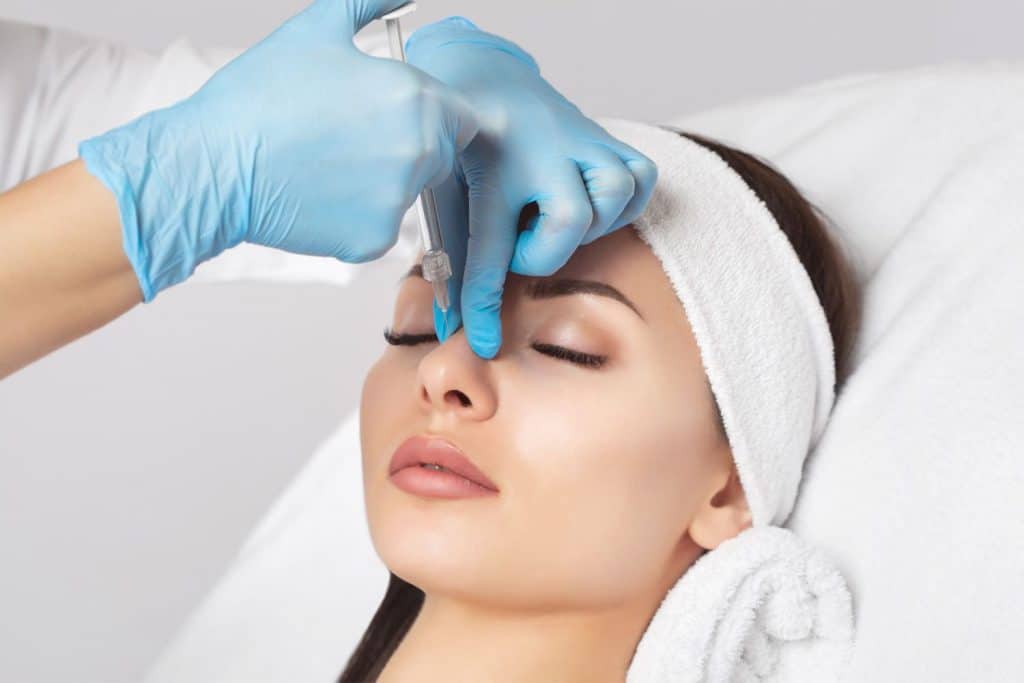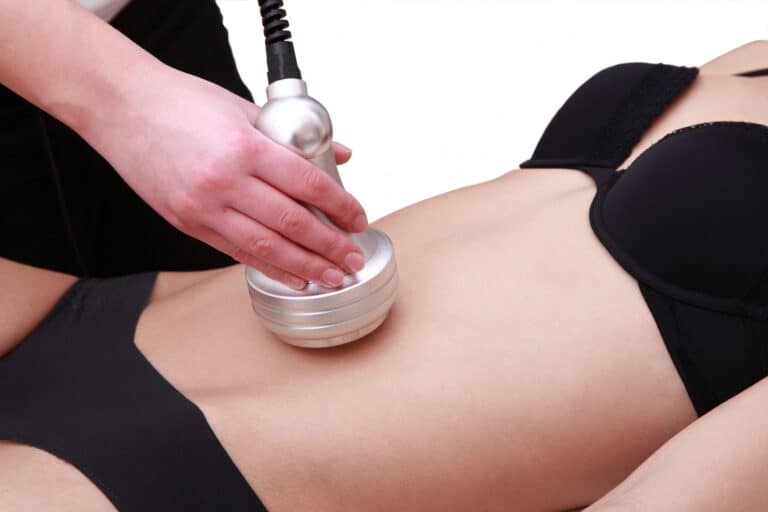Key Takeaways
- Non-surgical rhinoplasty offers a less invasive alternative to traditional nose surgery, with the procedure typically involving injectable fillers to alter the shape of the nose.
- The average cost of non-surgical rhinoplasty varies widely, often ranging from $600 to $1,500, depending on factors like geographic location, the expertise of the practitioner, and the type of filler used.
- Key factors that influence the price include the practitioner’s experience, the type of filler materials used, and the complexity of the individual’s requirements.
- Understanding the procedure is crucial; it’s generally quick, with minimal downtime, but the results are temporary, usually lasting 6 to 18 months.
- Awareness of potential risks and complications, such as infection or filler migration, is important, even though they are less severe than those associated with surgical rhinoplasty.
- Insurance does not typically cover non-surgical rhinoplasty since it is considered a cosmetic procedure, making out-of-pocket costs a significant consideration for most people.
- When deciding between surgical and non-surgical rhinoplasty, weigh factors such as cost, recovery time, risks, and the permanence of results according to personal priorities and circumstances.
Understanding Non-Surgical Rhinoplasty
Procedure Basics
Non-surgical rhinoplasty, often termed as a “liquid nose job,” offers an alternative to traditional surgery. It uses injectable fillers to shape the nose. This method stands out for its minimal downtime and absence of incisions.
Patients choose this option for minor adjustments. It’s less invasive than surgical rhinoplasty. The process involves injecting hyaluronic acid fillers into specific areas of the nose. These fillers can correct bumps, improve nasal symmetry, and refine the nasal tip.
Filler Types
Several types of fillers are available for non-surgical rhinoplasty. Hyaluronic acid-based fillers like Restylane and Juvederm are popular choices. They are known for their safety and reversibility.
Calcium hydroxylapatite (Radiesse) is another option, offering longer-lasting results. Each filler has unique properties that make it suitable for different needs and goals.
Cost Factors
The cost of non-surgical rhinoplasty varies widely. It depends on geographic location, the expertise of the practitioner, and the type of filler used. On average, prices range from $600 to $1,500 per session.
Factors influencing cost include the amount of filler needed and follow-up treatments. Patients must consider these aspects when budgeting for their procedure.
Maintenance Needs
Results from non-surgical rhinoplasty are temporary but impactful. They typically last from six months to two years, depending on the filler used. To maintain their desired appearance, patients need periodic touch-ups.
This requirement for ongoing maintenance is a key consideration. It contrasts with the permanent nature of surgical rhinoplasty but offers flexibility in changing one’s appearance over time.
Average Costs Explained
Price Range
The cost of a non-surgical rhinoplasty typically falls between $600 and $1,500. This price range can vary depending on the provider’s experience and the geographical location of the clinic. Major cities often have higher prices due to increased demand and higher operational costs.
Patients should expect to pay towards the higher end of this range for experienced professionals. These practitioners bring a level of expertise and precision that can significantly impact the outcome of the procedure.
Additional Fees
Beyond the base cost, several additional fees may come into play. Facility fees are common if the procedure is performed in a clinic equipped with advanced technology. These fees cover the use of space and equipment necessary for the treatment.
Anesthesia or numbing agents, although not always required, can add to the total cost if used. Patients preferring these comfort measures during their treatment should discuss options and associated costs with their provider beforehand.
Long-term Considerations
Non-surgical rhinoplasty results are temporary, lasting from six months to two years based on the type of filler used. Maintaining these results over time requires repeat treatments, which can add up financially.
Individuals considering this procedure should factor in these long-term costs when deciding. The cumulative expense may approach or surpass that of a surgical rhinoplasty over time, especially for those seeking to maintain their results for many years.
Factors Influencing Price
Aesthetic Goals
Individual aesthetic goals play a significant role in the cost of non-surgical rhinoplasty. Patients seeking subtle enhancements may require less filler, leading to lower costs. Conversely, more dramatic changes often necessitate additional product and sessions, increasing expenses.
The complexity of the desired outcome also affects pricing. Simple adjustments like smoothing out small bumps are typically more affordable than comprehensive reshaping or lifting the nasal tip. Each goal requires unique techniques and amounts of filler, impacting the overall cost.
Filler Type
The type and amount of filler used are crucial price determinants. Hyaluronic acid fillers, commonly employed for their safety and reversibility, vary in price. Brands like Juvederm and Restylane may have different costs based on their formulation and longevity.
The volume of filler needed directly influences the price. A minor correction might need only a small quantity, while significant modifications require more. Providers calculate costs based on these factors, ensuring patients receive tailored treatments that reflect their specific needs.
Geographic Variations
Location significantly impacts non-surgical rhinoplasty costs. Larger cities often have higher prices due to increased demand and operational expenses. For example, clinics in New York City or Los Angeles might charge more than those in smaller towns.
The expertise of the practitioner also varies with geography. Renowned specialists in cosmopolitan areas may command higher fees owing to their experience and reputation. Patients should consider these geographical variations when budgeting for their procedure.

Procedure Insights
Steps Involved
The journey towards a reshaped nose without surgery begins with consultation. Here, the practitioner assesses your nasal structure and discusses desired outcomes. Next, a topical anesthetic is applied to minimize discomfort. The actual procedure involves injecting a filler, such as hyaluronic acid, into specific areas of the nose. This process typically takes less than an hour, showcasing its efficiency.
This method allows for immediate visual results. Patients can see their new nose shape right away, making it a preferred choice for those seeking quick enhancements.
Key Benefits
One of the standout advantages of non-surgical rhinoplasty is the minimal downtime involved. Unlike traditional rhinoplasty, there’s no need for lengthy recovery periods. Most individuals return to their daily activities immediately after the procedure.
The absence of general anesthesia is another significant benefit. It not only reduces risks associated with surgery but also appeals to those apprehensive about going under. These aspects underscore non-surgical rhinoplasty as a safer alternative with fewer complications.
Practitioner Experience
Choosing an experienced practitioner cannot be overstated in importance for achieving optimal results. Their expertise ensures precise filler placement, which directly influences the aesthetic outcome. An adept professional also minimizes risks of side effects, further enhancing patient satisfaction.
Researching and selecting a practitioner with a robust portfolio of successful non-surgical rhinoplasties is crucial. It provides assurance in their ability to tailor the procedure to your unique facial structure and desired look.
Risks and Complications
Common Side Effects
Swelling, bruising, and asymmetry stand out as the most common side effects following a non-surgical rhinoplasty. These issues typically resolve within a few days to weeks. Swelling can mask the final outcome immediately after the procedure, requiring patience from patients. Bruising varies among individuals but is generally mild and can be concealed with makeup. Asymmetry, although less frequent, might occur due to uneven filler distribution or individual healing responses.
Patients should anticipate some degree of these side effects as part of their recovery process. Discussing concerns with a qualified professional helps manage expectations and ensures a smoother recovery.
Serious Risks
While non-surgical rhinoplasty boasts a favorable safety profile, it’s not without its risks. Vascular complications are rare but serious concerns that arise when fillers are inadvertently injected into blood vessels. This error can lead to skin necrosis or even more severe outcomes if filler material travels to the eyes or brain.
Proper technique and choosing an experienced provider are critical in minimizing these risks. Awareness and prompt action are key should any signs of vascular compromise appear post-procedure.
Reversibility
A significant benefit of non-surgical rhinoplasty is the reversibility of most complications due to the non-permanent nature of fillers. Hyaluronic acid-based fillers can be dissolved with an enzyme called hyaluronidase, offering a safety net for unsatisfactory results or in the event of certain complications.
This feature provides peace of mind for patients, knowing that they have options if results don’t meet their expectations or if adverse reactions occur.
Insurance Coverage Insights
Cosmetic Exclusions
Insurance companies often exclude cosmetic procedures from coverage. This includes non-surgical rhinoplasty, a popular choice for altering the nose’s appearance without surgery.
Many seek this procedure for its minimal downtime and absence of surgical risks. Yet, they face the reality that their health insurance won’t cover the costs. It’s crucial to understand these exclusions before planning your procedure.
Medical Necessity
In some cases, exceptions exist for medical necessity. If a patient has breathing issues that can be improved with rhinoplasty, insurance may cover part of the cost.
This doesn’t mean full coverage but could significantly reduce out-of-pocket expenses. Always consult a healthcare professional to determine if your case might qualify as medically necessary.
Policy Details
Understanding your insurance policy is key. Each provider has unique policies regarding what is and isn’t covered.
Before deciding on non-surgical rhinoplasty, contact your insurance company. They can provide detailed information about your coverage. This step can help avoid unexpected expenses and ensure you’re fully informed about potential costs.
Comparing Surgical and Non-Surgical Options
Cost Effectiveness
Non-surgical rhinoplasty, often referred to as a “liquid nose job,” typically involves injectable fillers to alter the shape of the nose. This option is significantly more affordable than traditional surgery. Costs can range from $600 to $1,500, depending on the type of filler used and the practitioner’s fees.
In contrast, surgical rhinoplasty can cost anywhere between $5,000 and $10,000 or more. This price includes surgeon’s fees, anesthesia, and facility costs. Patients must also consider potential additional expenses related to recovery.
Recovery Time
One major benefit of non-surgical rhinoplasty is the minimal downtime required. Most patients can return to their daily activities immediately after the procedure. There may be some minor swelling or bruising, but these side effects typically subside within a week.
Surgical rhinoplasty requires a longer recovery period. Patients often experience significant swelling and bruising for at least two weeks. Full recovery and final results can take up to a year to become apparent.
Risk Profile
Non-surgical options carry fewer risks compared to surgical methods. The most common side effects are temporary and include redness, swelling, and bruising at the injection site. There’s also a lower risk of complications like infection or adverse reactions.
Surgery carries inherent risks such as anesthesia complications, infection, or unsatisfactory results requiring revision surgery. These factors contribute to the overall risk profile that patients must consider when choosing between non-surgical and surgical rhinoplasty.
Result Longevity
While non-surgical rhinoplasty offers an immediate change with minimal risk and downtime, it’s important to note that the results are temporary. The effects typically last from six months to two years, depending on the type of filler used.
On the other hand, surgical rhinoplasty provides permanent changes to the nose’s structure. This permanence is a key consideration for those seeking long-term solutions for nasal reshaping.
Making Your Decision
Personal Goals
After understanding the differences between surgical and non-surgical rhinoplasty, it’s crucial to reflect on personal aesthetic goals. Non-surgical options offer a less invasive approach, ideal for those seeking minor adjustments or are hesitant about surgery. They can enhance the nose’s shape without the downtime associated with surgical procedures.
However, results from fillers are temporary. This means repeated treatments are necessary to maintain the desired look. Consider if this commitment aligns with your lifestyle and long-term objectives.
Budget Considerations
Non-surgical rhinoplasty costs vary based on location, practitioner expertise, and the type of filler used. Generally, it’s more affordable upfront than surgery but can become costly over time with maintenance treatments. Draft a budget that accounts for initial treatment and future touch-ups.
This financial planning ensures you’re prepared for the ongoing investment required to sustain your aesthetic achievements.
Practitioner Research
Selecting a qualified practitioner is paramount. Their skill level directly influences the outcomes of non-surgical rhinoplasty. Look for professionals with extensive experience in dermal fillers and a portfolio of before-and-after photos.
Scheduling consultations with potential practitioners offers insights into their approach and the chance to discuss expectations. These meetings should provide clarity on what non-surgical rhinoplasty can achieve for your unique facial structure.
Pros and Cons Analysis
Weighing the advantages against the drawbacks of non-surgical versus surgical options is vital. Non-surgical methods boast minimal recovery time, lower initial costs, and reversible results if dissatisfaction occurs. Yet, they lack permanence and require regular upkeep.
Conversely, surgical rhinoplasty offers lasting changes but comes with higher risks, longer recovery periods, and greater expense. Assess these factors in light of your personal preferences, health considerations, and financial situation.
Closing Thoughts
Non-surgical rhinoplasty offers a less invasive, cost-effective alternative to traditional surgery, making it an appealing option for those seeking to enhance their nose’s appearance without the downtime. Understanding the factors that influence cost can help you budget effectively. Keep in mind, though, that while cheaper than surgery, this procedure still carries risks and may not be covered by insurance. Comparing both surgical and non-surgical options is crucial in making an informed decision that aligns with your aesthetic goals and financial limits.
Your journey to achieving the desired look doesn’t have to be daunting. Armed with insights on procedure specifics, potential risks, and cost considerations, you’re now better equipped to weigh your options. Always consult with a qualified professional to ensure the best outcome. Ready to take the next step? Reach out to a cosmetic specialist today and explore how non-surgical rhinoplasty can meet your needs.
Frequently Asked Questions
What is non-surgical rhinoplasty?
Non-surgical rhinoplasty uses dermal fillers to alter the shape of your nose without surgery. It’s fast, with minimal downtime.
How much does non-surgical rhinoplasty typically cost?
The average cost ranges between $600 and $1,500, varying based on location and practitioner expertise.
What factors affect the price of non-surgical rhinoplasty?
Key factors include the type of filler used, the practitioner’s experience, and geographic location.
What should I know about the procedure?
It involves injecting fillers into specific areas of the nose to achieve desired reshaping or contouring effects.
What are the risks of non-surgical rhinoplasty?
Common risks include redness, swelling, bruising at the injection site, and less commonly, filler migration or vascular complications.
Will insurance cover my non-surgical rhinoplasty?
Typically, insurance does not cover cosmetic procedures like non-surgical rhinoplasty unless it’s for reconstructive purposes.
How does non-surgical compare to surgical rhinoplasty?
Non-surgical rhinoplasty offers temporary results with less risk and no downtime, unlike surgical options that provide permanent reshaping but come with higher costs and recovery time.





